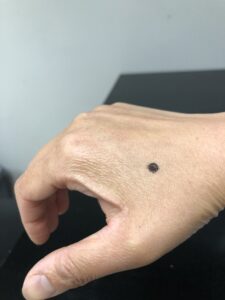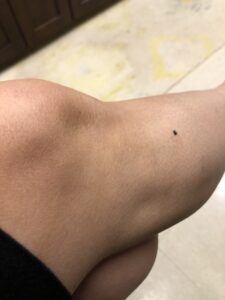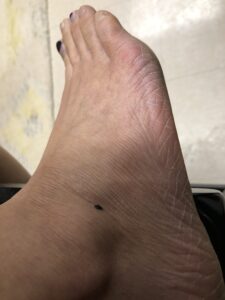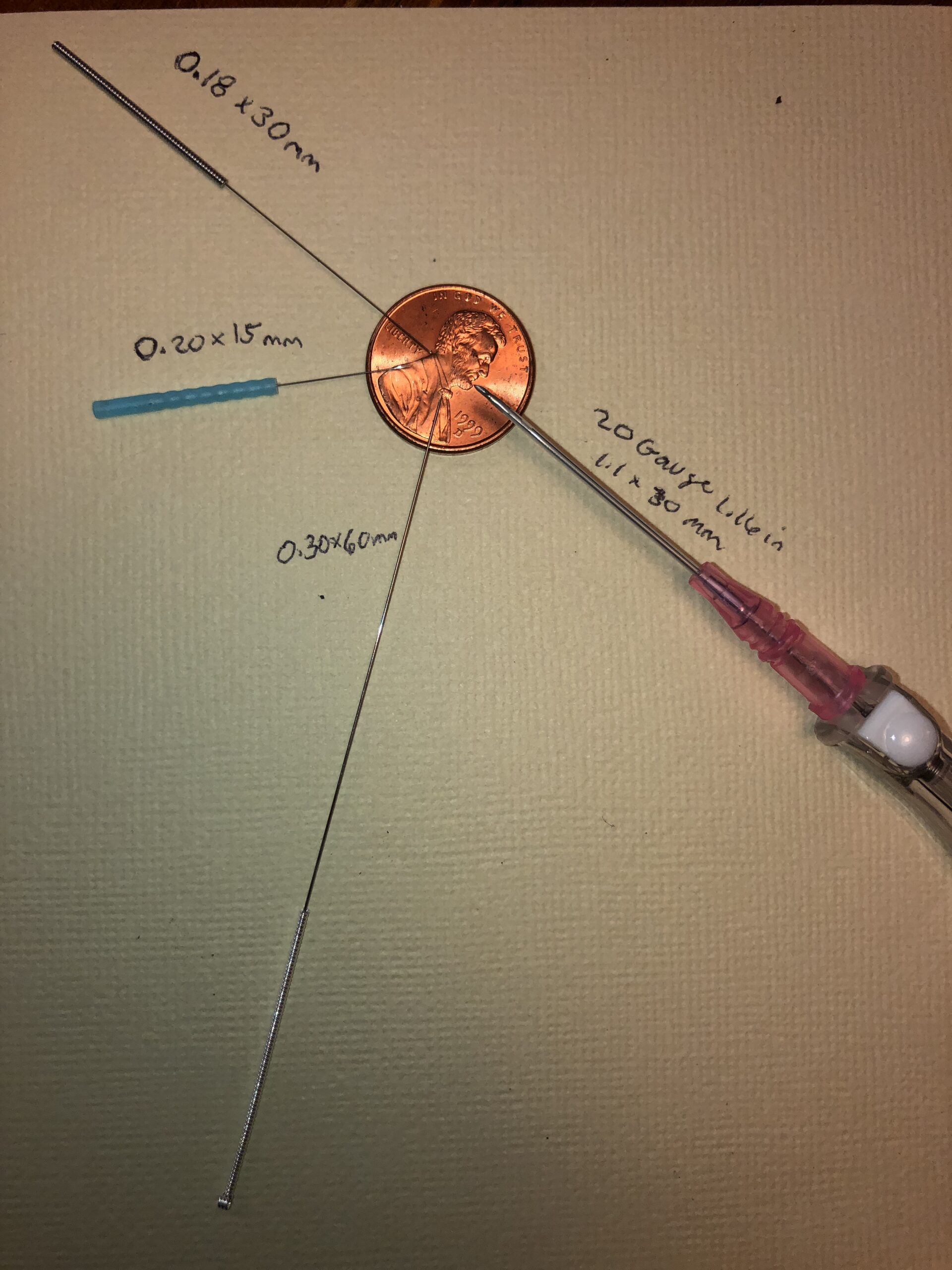About the Author:
Zhiling Trowbridge MD has been providing acupuncture to the community of Grand Rapids, MI since 2016. She received her medical degree at Wayne State University. She is board certified in family medicine. She studied and taught acupuncture through the Harvard Structural Acupuncture Program. She is also certified in acupuncture from the Helms Medical Institute.
What’s the point of acupuncture points?
There are over 300 acupuncture points recognized by the World Health Organization (WHO), and many more that may be used in more specialized forms of acupuncture. Acupuncture points tend to be found on meridian channels and each point has a name both in English and Chinese. The name of a point hints towards the property or effect of the point, and or its general location on the body.
Common Acupuncture Points:



(from left to right Li4, St36, and Gb41, see black dot)
He Gu (合谷) or Large Intestine 4 (LI4), means Converging Valley. It’s location is at the junction between the thumb and index finger on the back of the hand at the soft spot near where the finger bones meet the upper part of the wrist joint.
Zu San Li (足三里) or Stomach 36 (ST36) means Leg Three Miles, or Another Three Miles. It is located along the lateral side of the tibia of the leg. It was said to be used by Chinese soldiers to give them more endurance during long marches. It commonly helps with digestion, food intolerances, edema, endurance, and knee pain to name a few of its uses.
Zu Lin Qi (足臨泣) or Gallbladder 41 (Gb41) means Foot Overlooking Tears. It is located on the lateral aspect of the malleolus near the ankle. It is used for autonomic dysfunction, hormonal concerns, sinus pressure and pain, and also has spiritual and ancestral influences.
What determines an acupuncture point?
Acupuncture has been practiced over 3000 years ago. The first historical account of it was written in the Huang Di Nei Jing (Yellow Emperor’s Classic of Internal Medicine), specifically the Su Wen and Ling Shu.
Acupuncture point locations are unique to the individual and is based on the measurement of cun. 3 cun is equal to the measurement of a patient’s index finger to pinky (4 digits wide). 1 cun is about the width of a patient’s thumb. If you placed your four fingers right below your knee cap on the outer side. You may notice a divot or depression there and that is Stomach 36, which is located 3 cun below the knee cap following the lateral side of the tibia bone of the leg.
Active acupuncture points can also correlate with divots or slight depressions along the skin if following a meridian line.
Research work on the fascial planes of the body (1) has also found that acupuncture points have an 80% correlation with the inter- and intramuscular fascial planes of the body. Fascia are sheaths of connective tissue that surround muscles, vessels, and organs, of the body, which provide support for the body as a whole.
How many needles do you need for a treatment?
That depends. There are some acupuncture treatment protocols that have a set number of acupuncture needles. The NADA (National Acupuncture Detoxification Association) Protocol is an acupuncture treatment of the ear that uses a 5 needle approach. NADA can be used for calm, centering/grounding, addiction disorders, and or detoxification from opioids. Sometimes NADA is done just on one ear but may be done bilaterally.
Most often the number of acupuncture needles may vary based on the initial condition and level of excess or deficiency of the energetic body. Acupuncture theory often uses 5 element theory to determine the nature and balance of each of the meridians. Based on this assessment, needle placement and the number of needles used can be determined and thus help treat the patient.
What does an acupuncture needle feel like when placed?
Acupuncture should be a generally painless procedure. Some points may be more tender than others. Acupuncture needles actually are closer to a filament than a needle. They are bendable, typically made of stainless steel (sometimes coated in silicone), and have a very small blunted end. They are different from a large bore needle that is commonly used to administer vaccinations or draw blood. The blunted end and flexibility allows for smooth passage through the skin. The depth of the needle is dependent on the style of acupuncture being performed. Generally Traditional Chinese Medicine (TCM) needles are placed at a greater depth compared to Japanese Kiiko Matsumoto style needling.
Most importantly after acupuncture needles are placed many patients should not feel the needles constantly, and can experience a general sense of calm or take a short nap during the treatment.
(1) Langevin HM, Yandow JA. Relationship of acupuncture points and meridians to connective tissue planes. Anat Rec. 2002 Dec 15;269(6):257-65. doi: 10.1002/ar.10185. PMID: 12467083.
Disclaimer:
The contents of this article, such as text, graphics, images and other material are intended for informational and educational purposes only and not for the purpose of rendering medical advice. The contents of this post are not intended to substitute for professional medical advice, diagnosis or treatment.
Please consult your physician for personalized medical advice. Always seek the advice of a physician or other qualified healthcare provider with any questions regarding a medical condition. Never disregard or delay seeking professional medical advice or treatment because of something you have read on this post.
